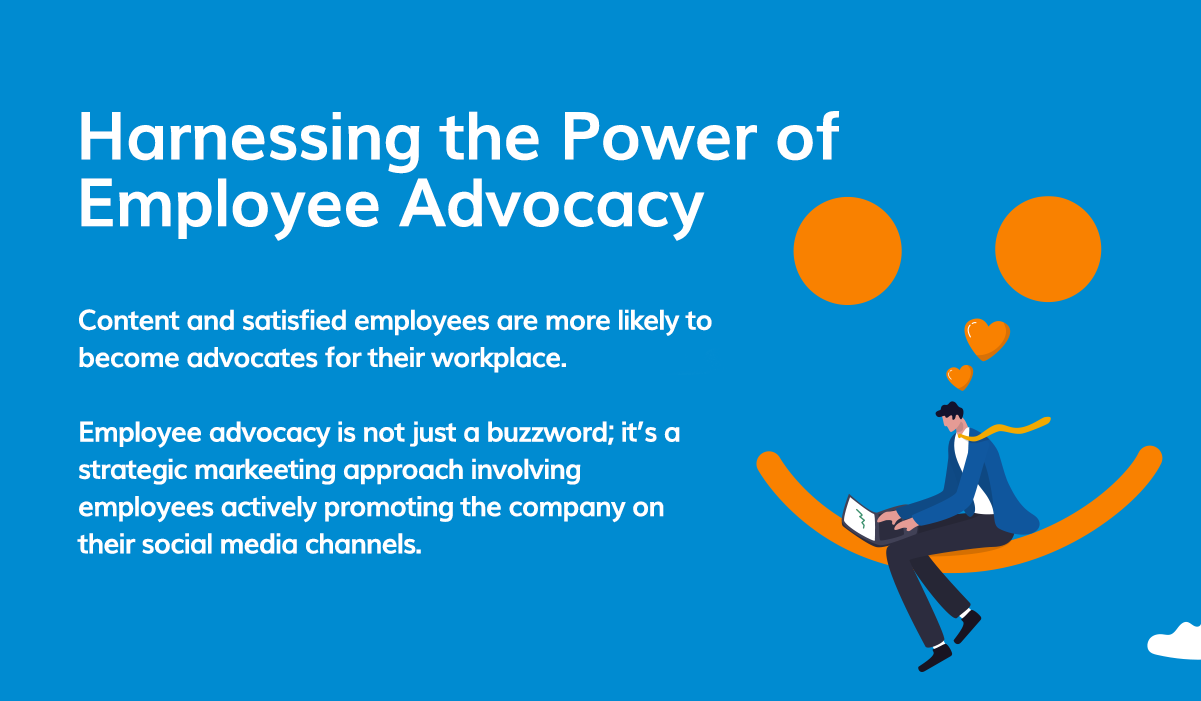In the dynamic landscape of modern businesses, fostering a positive work environment is increasingly recognised as a key factor for success. This emphasis on workplace happiness aligns with the understanding that content and satisfied employees are more likely to become advocates for their workplace. This article explores strategies to maximise employee advocacy, emphasising the intrinsic link between workplace well-being and the positive external impact on brand perception.
Understanding Employee Advocacy
Employee advocacy is not just a buzzword; it’s a strategic approach to marketing that involves employees actively promoting the company on their personal social media channels. This grassroots approach adds a human touch to corporate communications and has the potential to amplify a brand’s reach exponentially.
Building a Foundation of Trust
Central to successful employee advocacy is trust. You cannot simply expect your employees to start sharing content on their personal accounts, to their own friends, just because you said so. Employees must feel a genuine connection with their workplace and believe in the value of the content they’re sharing. This involves cultivating a positive work environment, fostering open communication, and ensuring employees take pride in their association with the brand. You also have to keep it mind that it starts from you, as a leader – research by LinkedIn shows that 56% of professionals say a business executive’s social media voice and presence directly influences whether or not they purchase from that business, and a staggering 66% said they are more likely to recommend a company or brand simply because they follow a company executive on social media.
Cultivating Workplace Happiness through Advocacy
1. Recognition and Appreciation: Celebrating employee achievements within the company is essential. Acknowledging and appreciating the efforts of employees not only boosts morale but also provides authentic content for employee advocates to share.
2. Training and Development: Comprehensive training is crucial for unlocking the full potential of employee advocacy. Beyond social media best practices, this training should encompass personal and professional development opportunities. Investing in employees’ growth fosters satisfaction and increases their willingness to advocate for the company.
3. Inclusive Culture: Fostering an inclusive workplace culture where every employee feels valued and heard is fundamental. An environment that encourages diversity and inclusion contributes to a sense of belonging, making employees more inclined to advocate for their workplace.
Measuring the Impact of Workplace Well-being and Advocacy
To gauge the success of an employee advocacy program, businesses should adopt metrics that reflect both external impact (reach, engagement) and internal factors (employee satisfaction, retention rates). Understanding the interconnectedness of workplace well-being and advocacy provides a holistic view of the program’s effectiveness.
Ultimately, its effectiveness and ROI cannot be measured directly… but clues are left behind by success. The more individuals in the market who can authenticate a customer’s buying decision, add a human touch to your brand, and engage with the market, the better. However, comprehensively gauging the impact of your employees’ digital efforts can be challenging. Aspects like brand reputation, trust, and loyalty don’t neatly align with a single data point. Trying to force such alignment risks making inaccurate decisions in your digital marketing strategy.
Rather than solely concentrating on easily quantifiable metrics, consider broadening your focus and taking into account all the available information. Ultimately, success leaves hints. Look beyond numerical data in spreadsheets and reports; pay attention to the positive discussions occurring on social media and other digital platforms, or take note of potential customers mentioning they learned about your brand on LinkedIn or through recommendations from existing customers.
Other Positive ‘Side Effects’
Whilst your company may have put in a lot of effort in their employee advocacy programs for marketing purposes, soon enough you might realise it’s affecting other things too – employee engagement! It goes without saying – employee engagement is extremely beneficial because it has a compounding effect that contributes to employee retention and sales. A happy employee is an effective one. Additionally, when employees experience a sense of appreciation and inclusion in the big picture, the process of recruitment tends to become smoother. This is because content and satisfied employees are willing to endorse their company as an excellent workplace and readily share job opportunities with their social media followers.
Last Note
In the pursuit of a positive workplace, companies can leverage the potential of employee advocacy to create a harmonious blend of workplace well-being and brand impact. Being aware of and practising these tips will lead to a positive feedback loop. This loop not only enhances internal workplace dynamics but also strengthens the company’s public image, positioning it for sustained success in the market. Good luck!
Share this article with a colleague.


